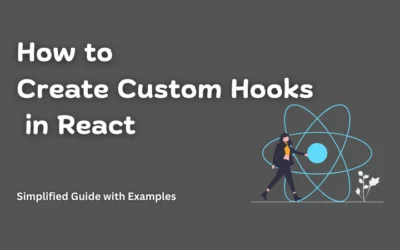Contents
What is an Invariant Violation Error?
An Invariant Violation error in ReactJS occurs when the library detects a situation that violates one of its fundamental rules or assumptions. These errors typically indicate a problem with the way your code is structured or how React is being used.
Understanding these errors is crucial for effective debugging and ensuring smooth application performance. In this guide, we’ll break down common “Invariant Violation” errors and provide insights on how to address them efficiently.
Invalid Element Type
When React encounters an unrecognized element type, it throws an “Invariant Violation” error. This can happen due to incorrect imports or typos in component names. To resolve this error, carefully check your import statements and component names to ensure accuracy.
import HomeComponent from "../Hoem"; //wrong path to the component
Target Container Is Not A DOM Element
React requires a valid DOM element for rendering components. If the target container is missing or incorrectly referenced, it triggers an “Invariant Violation” error. Ensure that the container referenced in ReactDOM.render() exists in the HTML file and is correctly specified.
In React 18, the rendering methodology has evolved, replacing ReactDOM.render() with a more modern approach.
With React 18, it’s recommended to create a root element first and then render the component using that root element. Make sure the container exists in the HTML file and is properly referenced.
<div id="root"></div>
For React versions up to 17:
ReactDOM.render(<App />, document.getElementById('root'));
For React 18:
import { createRoot } from 'react-dom/client';
import App from './App';
const root = createRoot(document.getElementById('root'));
root.render(<App />);
Objects Are Not Valid As A React Child
In React, only certain data types like strings and numbers can be rendered directly, not objects. Attempting to render an object directly will result in an “Invariant Violation” error. Make sure to convert objects into valid elements or components before rendering them.
const carObject = { carModel: 'Opel' };
return <div>{carObject}</div>; //This will result in error
How it should be:
const carObject = { carModel: 'Opel' };
return <div>{carObject.carModel}</div>; //This will result in error
Minified React Error
Minification compresses code to improve performance, but it can obscure error messages in minified versions of React applications. To identify the root cause of errors, use the development build of your React application, which provides detailed error messages and readable code for easier debugging.
Uncaught Invariant Violation: Hooks Can Only Be Called Inside The Body Of A Function Component
This error occurs when attempting to use React hooks outside the body of a functional component. Hooks, like useState and useEffect, are designed to be used within functional components to add state and other features. Avoid using hooks outside the scope of a functional component to prevent this error.
Common Causes:
- Using Hooks Outside Functional Components
- Nesting Hooks in Loops or Conditions
Resolving The Error: Ensure that hooks are used exclusively within the body of functional components. Refactor your code to encapsulate logic requiring hooks within functional components or custom hooks.
import React, { useState } from 'react';
function Component() {
// Correct usage of useState within a functional component
const [count, setCount] = useState(0);
// Incorrect usage of useState outside the body of a functional component
function incrementCount() {
useState(count + 1); // The useState will trigger the error
}
return (
<div>
<p>Count: {count}</p>
<button onClick={incrementCount}>Increment</button>
</div>
);
}
export default Component;
Conclusion
Understanding and addressing “Invariant Violation” errors is essential for React developers. By following best practices and utilizing development tools effectively, developers can navigate these errors with confidence, ensuring the smooth performance of their React applications. Remember, precise coding and adherence to React guidelines are key to avoiding and resolving these errors efficiently.





0 Comments